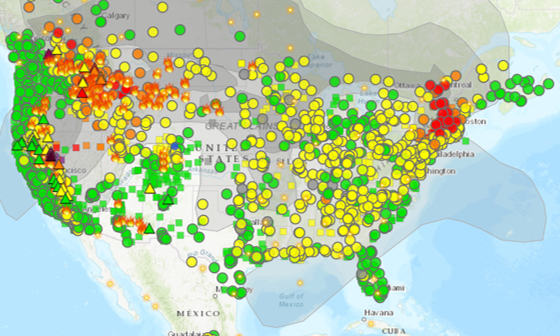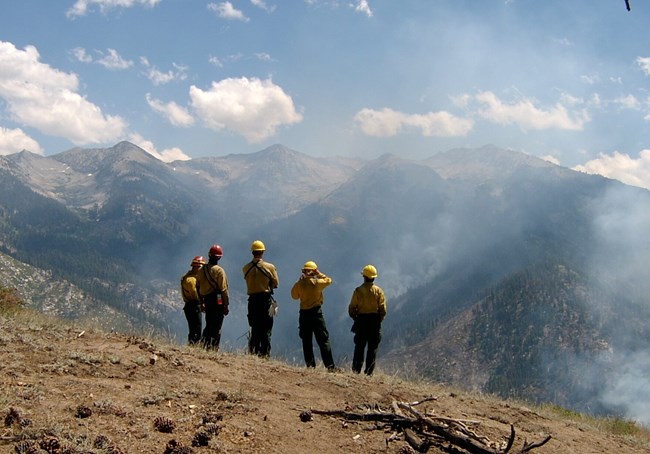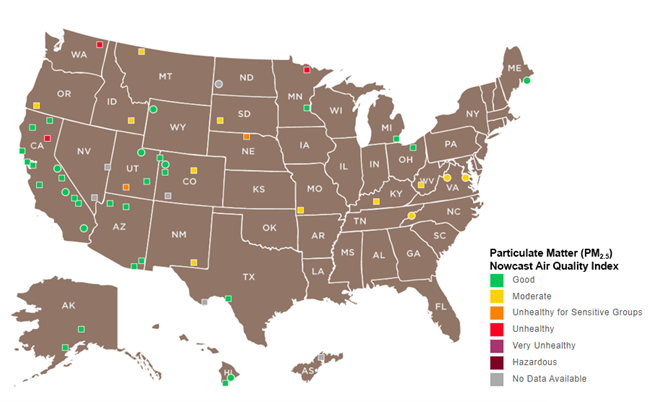Last updated: August 12, 2021
Article
More parks can now track air quality during wildfires

In recent years, wildfire severity and the length of fire season have both increased across the U.S. This means that parks, just like other communities, are experiencing more wildfire smoke. Smoke can make it harder to see scenic vistas and create hazardous health conditions for visitors and park staff. Even relatively low levels of fine particulate matter (PM) from smoke can be harmful. People with heart or lung disease, diabetics, older adults, and children are the most vulnerable. Monitoring PM levels during wildfires can help park staff track air quality, share information about potential health risks, and inform park management decisions. Historically, it has been very expensive to monitor particulate matter, with only a few parks across the country be able to do that on a continuous basis. However, in the last few years, new technology has made sensor-based particulate monitoring much more affordable and reliable.

The NPS Air Resources Division is working with parks across the country on a smoke monitoring pilot program so that more parks can track air quality during wildfires by monitoring real-time PM conditions. In spring 2021, this program started estimating smoke levels with 50 low-cost PurpleAir sensors in 40 parks. This type of sensor is easy to set-up and uses light scattering measurements to estimate the amount of PM in the air.
Low-cost sensors, like PurpleAir, are not used for regulatory purposes and are not as accurate as the more expensive regulatory instruments. However, they have been rigorously tested by a number of research groups. In fact, the NPS uses a correction factor developed by the U.S. Environmental Protection Agency (EPA) that improves PurpleAir monitor performance for sites across the U.S. PurpleAir monitors low cost of a few hundred dollars vs. upwards of $20,000 for a regulatory monitor, allows this type of sensor to be installed at a large number of parks across the country, making PM monitoring more accessible to all parks.

For this pilot project, data collected using the PurpleAir sensors are converted to EPA’s color coded NowCast Air Quality Index (AQI) and displayed on the NPS live weather and air quality data website. The NowCast AQI provides health advisory information based on current air quality conditions. Air quality data from the NPS PurpleAir sensors are also automatically integrated with data from regulatory instruments and other sensors from across the U.S. as part of the EPA Fire and Smoke Map webpage. This webpage also shows wildfire locations and smoke detections from ground-based and satellite observations. Finally, park-specific links to smoke forecasts that use NOAA’s High-Resolution Rapid Refresh three-dimensional model are included in the NPS live weather and air quality data webpage for participating parks. These links will help connect park staff and visitors with useful real-time information about smoke levels in parks with the goal of supporting informed communication with staff and visitors during wildfire season.
Check out the site-specific webpages summarizing real time data for all participating park units. For more information about the pilot project, please contact Anthony Prenni (anthony_prenni@nps.gov).
